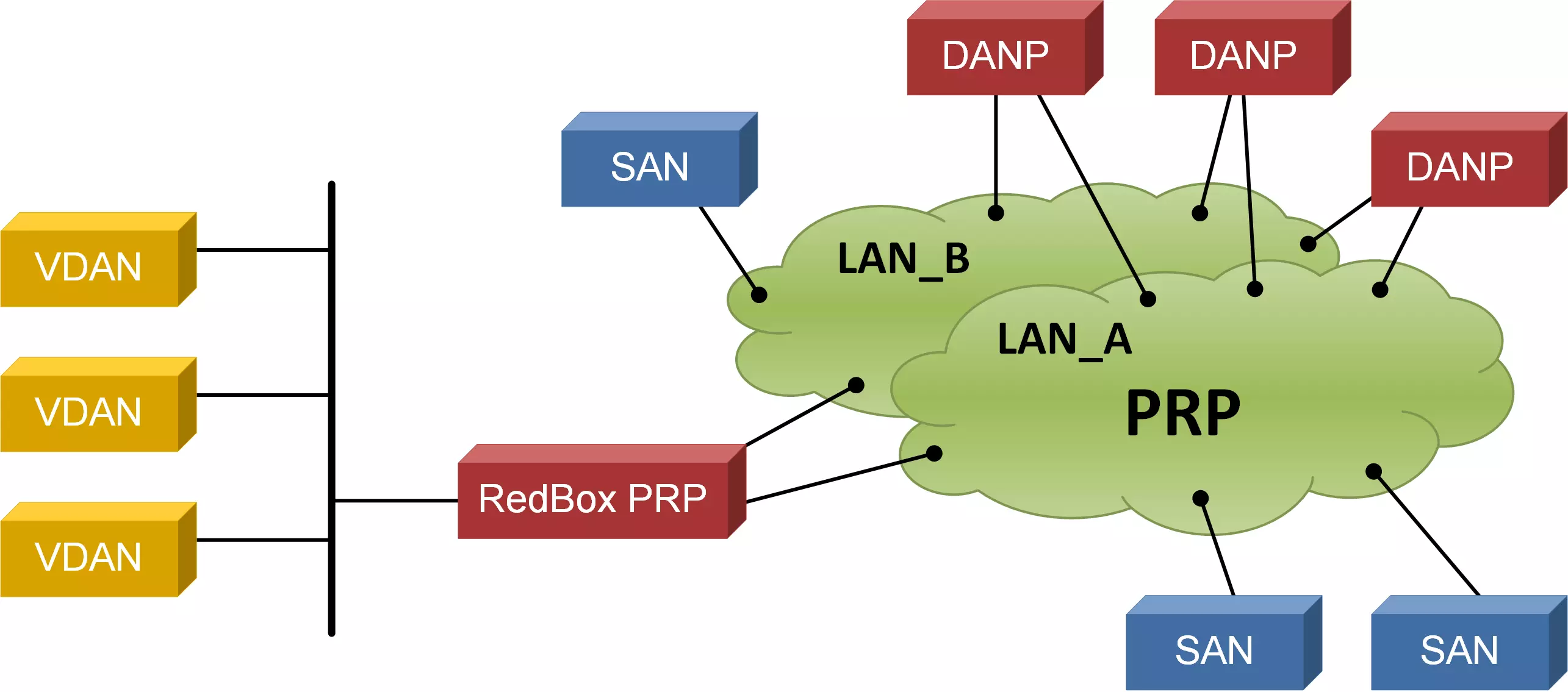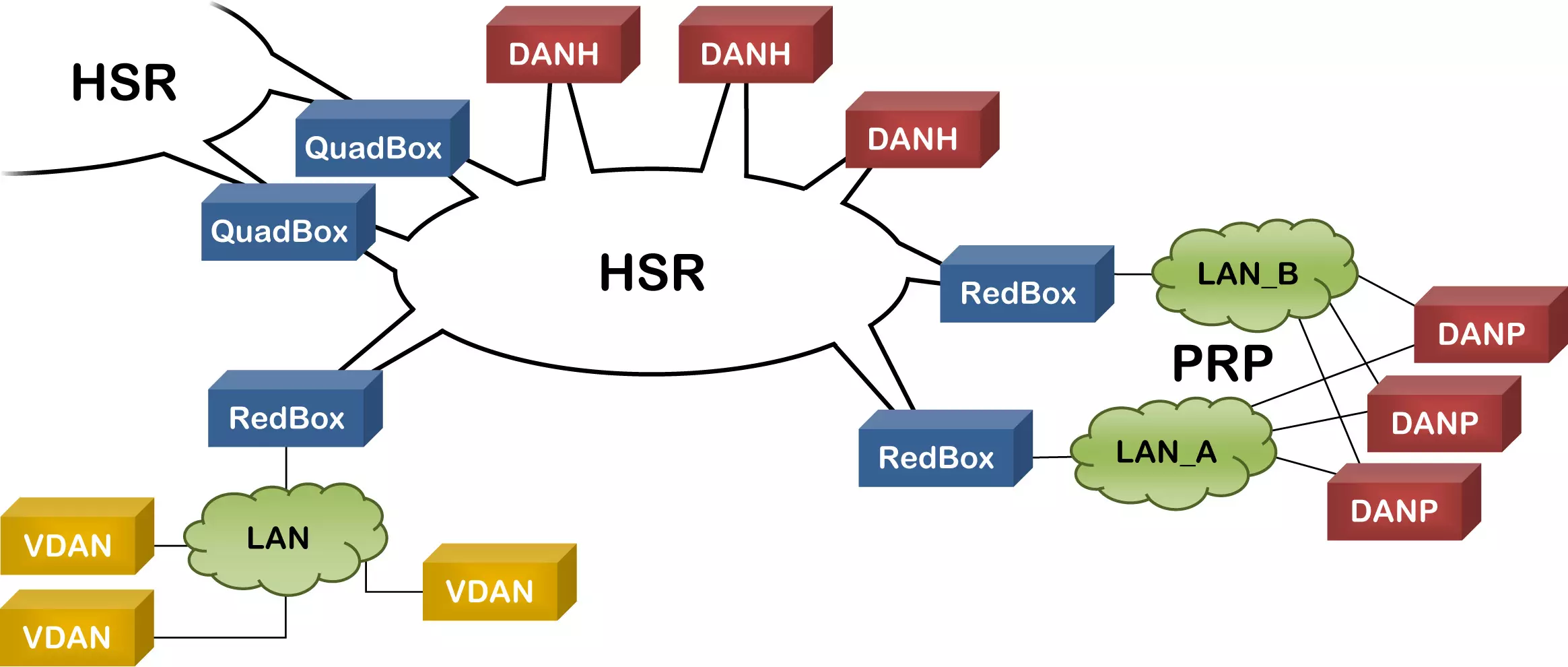Seamless Redundancy with PRP and HSR
The Parallel Redundancy Protocol (PRP) and the High-Availability Seamless Redundancy Protocol (HSR) enable completely uninterrupted handling of single network failures (cables, power supply, switches, etc.) and are standardized by the International Electrotechnical Commission (IEC) as IEC 62439-3.
Parallel Redundancy Protocol
For PRP, two completely independent networks are operated in parallel (LAN_A and LAN_B). Connected high-availability Dual Attached Nodes (DANs) have two network ports, one connected to LAN_A and the second connected to LAN_B. The topology of the networks can be freely selected, disjunct cable routing is advantageous. Both LAN_A and LAN_B can even be operated with other redundancy concepts within the LANs themselves.
All packets are always sent via both connections to both LANs. The receiver accepts the packets on both ports and ignores the packet arriving later.
PRP can be implemented in an additional software layer or as an upstream hardware solution (RedBox). The redundancy concept therefore requires no switching or reconfiguration.

DAN: Dual Attached Node Implementing PRP, high-availability node with two network interfaces
SAN: Single Attached Node, standard node with a single network interface
RedBox: Redundancy Box
VDAN: Virtual Dual Attached Node
A Redundancy Box (RedBox) connects normal nodes, i.e. those with only one network interface, to both LANs of a PRP network. Because such a node appears to other nodes (DAN) as a node with two interfaces, they are called Virtual Dual Attached Nodes (VDAN).
The processes of duplicating the packets and filtering out the duplicates are performed in the RedBox. The processes are completely transparent to the VDANs, i.e. the RedBox takes over all PRP functions of the connected nodes. Particularly, it also sends the necessary supervision packets.
For network management, the RedBox can also appear as an independent DAN with its own IP address and provide corresponding functions.
High-Availability Seamless Redundancy Protocol

With the HSR protocol, seamless redundancy is achieved not by two completely separate networks, but by simultaneous transmission in both directions on a closed ring.
The HSR concept includes the following network elements and options (see figure):
- An end node inserted directly into the ring is called a Double Attached Node Implementing HSR (DANH). This is a device with an integrated three-port HSR switch (two external and one internal port). Two copies of a frame to be sent are created and transmitted in the ring simultaneously in both directions. Intermediate nodes forward frames in the ring. Unicast frames are removed from the ring by the receiver, multicast and broadcast frames by the sender. The receiver uses the first frame received and eliminates the duplicate that arrives later.
- HSR frames have a special additional header that identifies them as such.
- A Redundancy Box (RedBox) is used to connect non-HSR-capable devices. The RedBox performs the HSR functions on behalf of all nodes connected to it. Thanks to this proxy function, nodes behind a RedBox appear as if they were doubly attached and are therefore referred to as Virtual Doubly Attached Nodes (VDAN).
- HSR rings can be coupled via Quadboxes. Redundant coupling requires two of them.
- Subnetworks using the Parallel Redundancy Protocol (PRP) can be connected to HSR networks via RedBoxes. End nodes in the PRP network are called Double Attached Node Implementing PRP (DANP).
InES implemented different solutions for redundancy, please get in touch with us if you are interested!